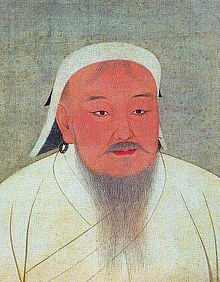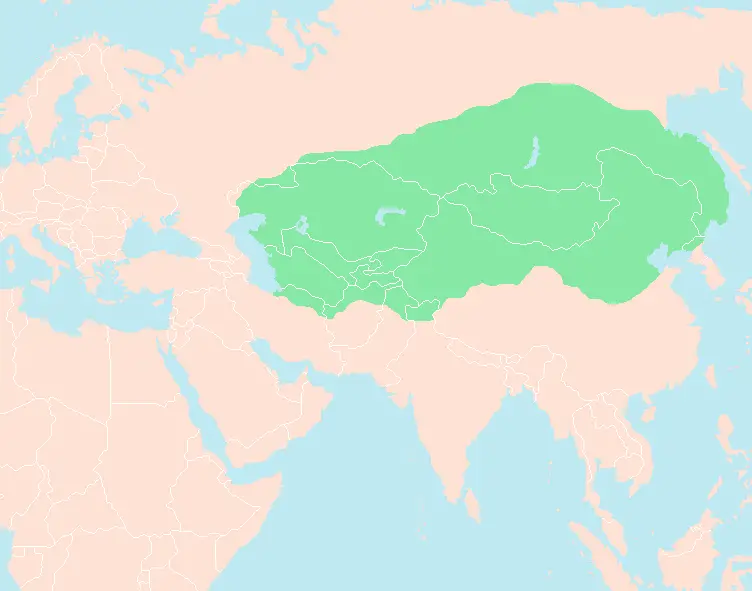Genghis Khan is one of the most feared names in history. He ruled for a relatively brief time, but his successors assured his legacy by expanding on his vision and uniting most of Asia, including China, under Mongol rule.
 Not much is known about the early life of Genghis Khan. His birth name is said to be Temujin, and he is thought to have been born in the mid-12th Century, in what is now northern Mongolia. He was married off at age 9, serving in the household of his father-in-law for three years until the arranged marriage could become law. From then, he went about making a name for himself.
Not much is known about the early life of Genghis Khan. His birth name is said to be Temujin, and he is thought to have been born in the mid-12th Century, in what is now northern Mongolia. He was married off at age 9, serving in the household of his father-in-law for three years until the arranged marriage could become law. From then, he went about making a name for himself.
A strong boy, Temujin seized power when his father-in-law, an important and powerful clan leader, died. Fighting for food and territory was a way of life for many people at this time, and Temujin saw his share of such battles. He was captured during one battle but escaped, furthering his reputation as a can-do leader.
The tribes of Mongolia at this time were lacking in any kind of central organization. By contrast, China had been very much organized for many years. Temujin set about uniting the various Mongolian tribes under the Mongol banner. With brutal efficiency, he achieved his goal in 1206. It was at this time that he took the name for which he is more famous, Genghis Khan, which translates as "Universal Ruler."
The Mongols were savage fighters, efficient at horseback warfare and brutal in their tactics at fighting hand-to-hand and at firing arrows from horseback. They were faster and more savage than their opponents, and this resulted in a series of victories for Genghis Khan and his united tribes.
Genghis Khan introduced several reforms that helped grow his rule and reputation. One such innovation was that after a victory, he didn't drive away the conquered, as was the custom of the time; rather, he integrated the vanquished soldiers into the Mongol civilization, giving it fresh soldiers and loyal families from which to produce more soldiers. Genghis Khan also practiced religious tolerance, allowing the conquered people (and indeed his own Mongols) to worship as they pleased, another way of securing loyalty to the overarching leader. Genghis Khan also created a code of law for his empire and instituted a postal system.
The Mongols expanded westward and eastward, seeking new opportunities for conquest and influence. Life was brutal and short for many people in these days; and, like other civilizations, the Mongols achieved much of their conquest by killing enemy soldiers.
Among the competing dynasties conquered by Genghis Khan and the Mongols were the Western Xia and the Jin, neighboring civilizations that were well-equipped and eager to do battle. The Mongols found success against both dynasties, however, and, in 1215, seized control of the Jin capital Zhongdu, which is today Beijing.
In the west, the Mongols conquered the Khwarezmian Empire and its capital, Samarkand, in brutal fashion, razing the city and driving out or killing the inhabitants. Mongol expansion continued westward, to the borders of European civilizations and into the Middle East.
 After success in the west, Genghis Khan returned to the east part of his empire, to continue to struggle to subdue more of China. It was during one of these battles that he died, in 1227. Accounts of his death vary. Some say that he fell ill during the fall of Yinchuan. Other accounts say that he died of battle wounds. What is not known, either, is the location of his burial. Tradition holds that he ordered his soldiers to conceal his burial place, in holding with Mongol traditions. His body has not been found.
After success in the west, Genghis Khan returned to the east part of his empire, to continue to struggle to subdue more of China. It was during one of these battles that he died, in 1227. Accounts of his death vary. Some say that he fell ill during the fall of Yinchuan. Other accounts say that he died of battle wounds. What is not known, either, is the location of his burial. Tradition holds that he ordered his soldiers to conceal his burial place, in holding with Mongol traditions. His body has not been found.
The legacy of Genghis Khan is a significant one, in that his successors, most notably his grandson Kublai Khan (who famously met Marco Polo), completed the conquest of all of China and ruled it for several dozen years. The immediate successor of Genghis Khan, Ogedei, presided over the Mongol Empire at its greatest extent, from Poland in the west to Korea in the east, about 11 million square miles, the size of the entire continent of Africa.
One economic benefit of the Mongols' seizure of much of Asia was the consolidation of rule over the sprawling Silk Road, which streamlined trade and communication between East and West.
The perception of Genghis Khan among the peoples that he conquered, however, is definitely a negative one. He was seen as brutal and intolerant and the bringer of death and destruction.